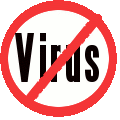Technical information on Monolaurin
The antiviral, antibacterial, and antiprotozoal properties of lauric acid and monolaurin have been recognized for nearly three decades by only a small number of researchers: their work, however, has resulted in 50 or more research papers and numerous U.S. and foreign patents. Prof. Dr. Jon J. Kabara performed the original seminal research in this area of fat research. Kabara (1968) first patented certain fatty acids (FAs) and their derivatives (e.g., monoglycerides (MGs) can have adverse effects on various microorganisms. While nontoxic and approved as a direct food additive by the FDA, monolaurin adversely affects bacteria, yeast, fungi, and enveloped viruses.
Kabara found that the properties that determine the anti-infective action of lipids are related to their structure: e.g., free fatty acids & monoglycerides. The monoglycerides are active; diglycerides and triglycerides are inactive. Of the saturated fatty acids, lauric acid has greater antiviral activity than either caprylic acid (C-8), capric acid (C-10), or myristic acid (C-14).
How Monolaurin Works
Fatty acids and monoglycerides produce their killing/inactivating effects by several mechanisms. An early postulated mechanism was the perturbing of the plasma membrane lipid bilayer. The antiviral action attributed to monolaurin is that of fluidizing the lipids and phospholipids in the envelope of the virus, causing the disintegration of the microbial membrane. More recent studies indicate that one antimicrobial effect in bacteria is related to monolaurin's interference with signal transduction/toxin formation (Projan et al 1994). Another antimicrobial effect in viruses is due to lauric acid's interference with virus assembly and viral maturation (Hornung et al 1994). The third mode of action may be on the immune system itself (Witcher et al, 1993).
Hierholzer and Kabara (1982) first reported the antiviral activity of the monoglyceride of lauric acid (monolaurin) on viruses that affect humans.. They showed virucidal effects of monolaurin on enveloped RNA and DNA viruses. This work was done at the Center for Disease Control of the U.S. Public Health Service. This study was carried out using selected virus prototypes or recognized representative strains of enveloped human viruses. All these viruses have a lipid membrane. The presence of a lipid membrane on viruses makes them especially vulnerable to lauric acid and its derivative monolaurin. These initial findings have been confirmed by many other studies.
Research has shown that enveloped viruses are inactivated by added fatty acids and monoglycerides in both human and bovine milk (Isaacs et al 199 1). Others (Isaacs et al 1986, 1990, 1991, 1992; Thormar et al 1987) have confirmed Kabara's original statements concerning the effectiveness of monolaurin.
The lipid-coated (envelope) viruses, bacteria and other microorganisms are dependent on host lipids for their lipid constituents. The variability of fatty acids in the foods of individuals as well as the variability from de novo synthesis accounts for the variability of fatty acids in their membranes.
Human Disease Organisms Inactivated
Some of the viruses inactivated by these lipids are the measles virus, herpes simplex virus (HSV-1 and -2), herpes family members (HIV, hepatitis C, vesicular, stomatitis virus (VSV), visna virus, and cytomegalovirus (CMV). Many of the pathogenic organisms reported to be inactivated by these antimicrobial lipids are those know to be responsible for opportunistic infections in HIV -positive individuals. For example, concurrent infection with cytomegalovirus is recognized as a serious complication for HIV positive individuals (Macallan et al 1993).
The potentially pathogenic bacteria inactivated by monolaurin include Listeria monocytogenes, Staphylococcus aureus, Streptococcus agalactiae, Groups A, streptococci-gram-positive organisms, and some gram-negative organisms (Vibrio parahaemolyticus and Helicobacter pylori).
Safety of Monolaurin
These antimicrobial fatty acids and their derivatives are essentially nontoxic to man. According to the published research, lauric acid is one of the best "inactivating" fatty acids, and its monoglyceride is even more effective than the fatty acid alone (Kabara 1978, Sands et al 1978, Fletcher et al 1985, Kabara 1985).
Monolaurin does not appear to have an adverse effect on desirable gut bacteria, but rather on only potentially pathogenic microorganisms. For example, Isaacs et al (1991) reported no inactivation of the common Esherichiacoli or Salmonella enteritidis by monolaurin, but major inactivation of Hemophilus influenza, Staphylococcus epidermis and Group B gram positive streptococcus.
Effectiveness of MonoLaurin
Decreased growth of Staphylococcus aureus and decreased production of toxic shock syndrome toxin-l was shown with monolaurin (Holland et al 1994). Monolaurin was 5000 times more inhibitory against Listeria monocytogenes than ethanol (Oh & Marshall 1993). In vitro monolaurin rapidly inactivate Helicobacter pylori. Of greater significance there appears to be very little development of resistance of the organism to the bactericidal effects (Petschow et al 1996) of these natural antimicrobials.
A number of fungi, yeast, and protozoa are also inactivated or killed by monolaurin. The fungi include several species of ringworm (Isaacs et al 1991). The yeast reported to be affected is Candida albicans (Isaacs et al 1991) The protozoan parasite Giardia lamblia is killed by monoglycerides from hydrolyzed human milk (Hemell et al 1986, Reiner et al 1986, Crouch et al 1991, Isaacs et al 1991).
Chlamydia trachomatis is inactivated by monolaurin (Bergsson et al 1998). Hydrogels containing monocaprin/monolaurin are potent in vitro inactivators of sexually transmitted viruses such as HSV-2 and HIV-1 and bacteria such as Neisserian gonorrhea (Thormar 1999).
MicroOrganisms inactivated by MonoLaurin
Viruses
- Measles (Rubeola) virus
- HIV
- Herpes simplex virus- (HSV-1 & 2)
- Vesicular stomatitis virus (VSV)
- Visna virus
- Cytomegalovirus (CMV)
- Influenza virus
- Pnuemonovirus
- Syncytial virus
- Bacteria
Gram-positive organisms
|
Gram-negative organisms
|
Yeasts, Fungi and Molds
- Aspergillus niger
- Penicillium citrinum
- Candida utilis and C. albicans
- Saccharomyces cerevisiae
- Several species of Ringworm
This page is a derivation of this page:
www.lauricidin.com/tech_data.htm
References available at:
www.lauricidin.com/references.htm
Copyright © 2005 Med-Chem Labs Inc.
Put MonoLaurin to work disabling germs. Order MonoClean

